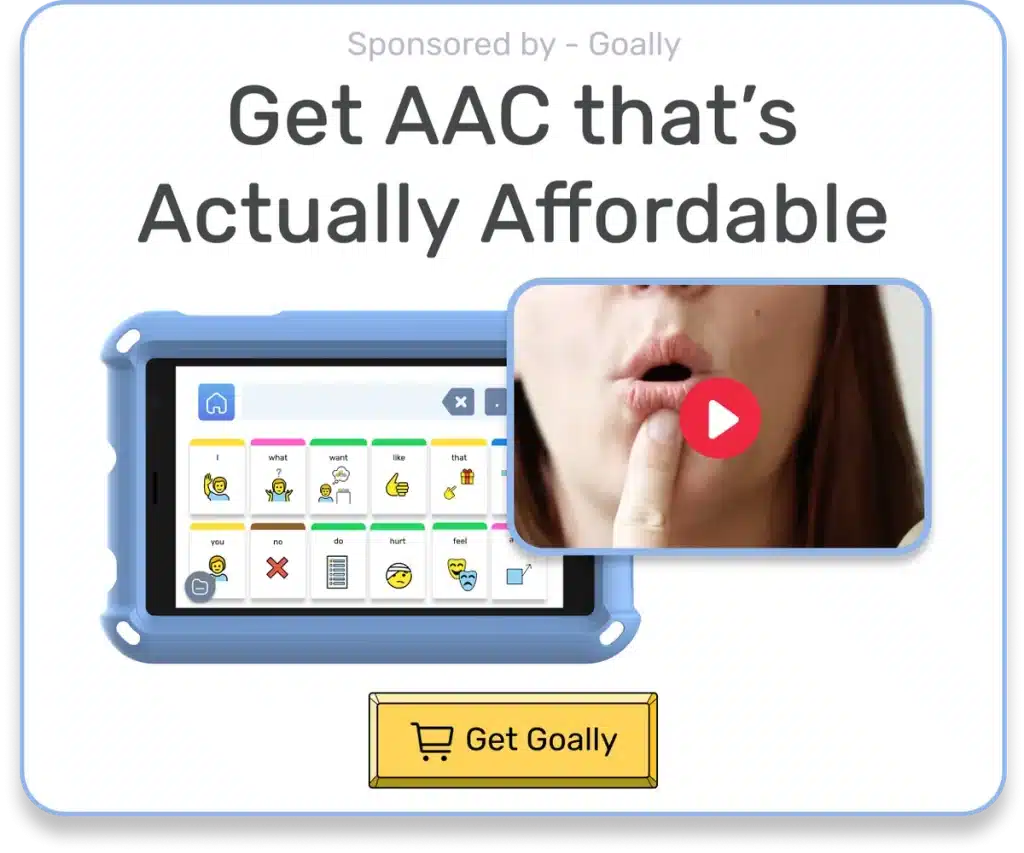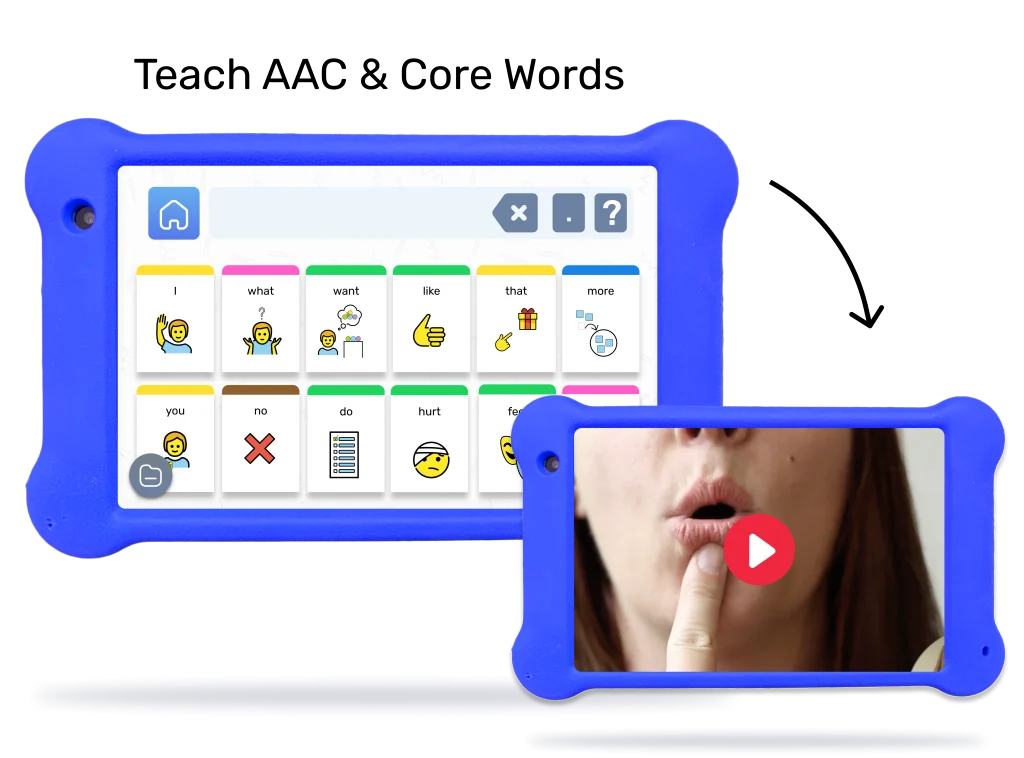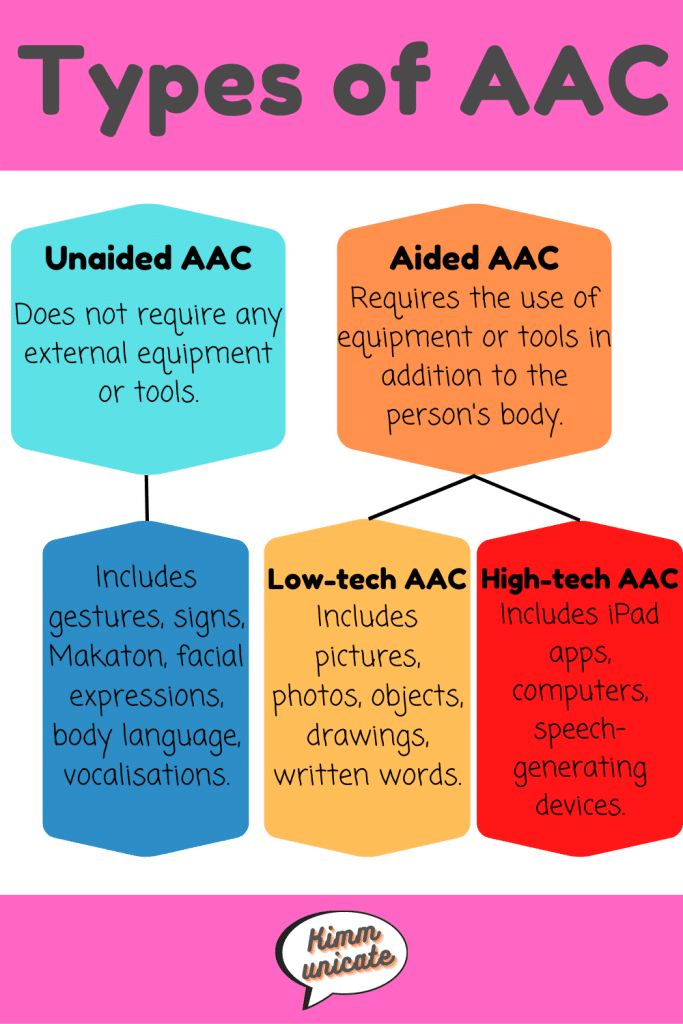Augmentative and alternative communication (AAC) is a term professionals use to describe how we communicate alongside spoken words or instead of spoken words. We all use these different supplements or alternatives when we share. Still, we don’t usually refer to them as AAC unless they are used by an individual experiencing limitations in spoken language. Suppose you are a parent considering how AAC may be able to help your child communicate. In that case, it is helpful to know the different types of AAC available.
Table of Contents
Children who struggle to communicate with spoken words should have access to several different types of AAC, all coming together to form the child’s AAC System. To help you make an informed decision on what aac speech device is right for your child, we’re going to explore the most common types of AAC. After you’ve read it, let us know what augmentative and alternative communication method you’ve had the best luck with in the comments.
What’s Considered No-Tech AAC?
Gestures (e.g., waving, pointing), behavior (e.g., pulling someone to the door to ask to go outside), and sign language are all examples of no-tech AAC. We call these types of AAC no tech. This is because they involve a person using only their own body rather than external technology. No-tech AAC strategies are inexpensive, usually easy to learn, and quick to use. This makes them an essential part of an AAC system.
However, no-tech forms of AAC may be more challenging for less familiar partners to understand. Therefore, they cannot be the only type of AAC available to a communicator struggling with spoken words. Other forms of no-tech AAC include facial expressions and gaze (i.e., looking at people and things to communicate). Many people who use high-tech AAC systems to communicate will continue to use no tech types of AAC across their lifetime.
Goally | The Safest Tablet for Kids

Read more: What Are the Best AAC Devices in 2022?
What Are the Types of Low-Tech AAC Devices?
Picture communication boards and books are both forms of low-tech AAC. We call these low-tech because they do not require higher technologies or batteries. These types of AAC usually include printed and laminated words with pictures to help children make choices, ask for things, and to express their ideas. They are readily available at a low cost. Additionally, you can use them to communicate in situations where the technology may not work, such as in the bathtub or the swimming pool. Having low-tech AAC tools available is a great backup plan when batteries die or when higher technology options are unavailable.

Read more: What is High-Tech Assistive Technology?
Similar to no-tech AAC options, low-tech types of AAC do not offer a spoken voice. Also, they usually do not have as many words available as higher technology tools. However, they may be easier for less familiar partners to understand than no tech strategies, given the picture and word support they offer. Communication boards and books are valuable to any child’s complete AAC system.
To communicate using one of these methods, a child learns to point to the picture of the word they want to say. When first learning, children may touch one image at a time to ask for things they want, such as food or activities. With modeling and support, children can learn to point to sequences of words to make sentences. Suppose a child has difficulty using their finger to tell. In that case, we can modify communication boards and books to allow the child to access the words. Those methods include using their eyes or saying yes or no, as a partner scans through the words on the board or book.
What Are the Types of High-Tech AAC Devices?
Tablets, computers, and smartphones that display pictures and words for communication are high-tech AAC. We call these types of AAC high-tech because they involve touch-screen technology and use batteries or electricity. There are two main elements to a communication device. The hardware (i.e., the tablet, computer, or smartphone) and the software (e.g., a particular app designed for communication). Some AAC devices are just for communication. We call these dedicated AAC devices. With a dedicated device, a child can only use the software for communication. Those types of AAC devices don’t usually have access to any other hardware features (e.g., web, email, games). You can obtain dedicated AAC devices from specialized companies.

Read More: What are the Best AAC Devices of 2023?
High-tech AAC devices usually come with far more words than a communication board or book. It is generally easier and faster to add new words on these platforms as your child’s needs change. These tools also display words and pictures and speak messages aloud, making them powerful communication tools for many situations. High-tech AAC is more costly than the other forms and may be a bit harder and more time-consuming to learn. However, with this type of AAC, you can even use your everyday devices. That means you can even use your tablet or smartphone at home, to support your child’s communication. The assessability is what makes AAC apps great. Just try downloading one of the many AAC apps on the market today.
How Does Using a High-Tech AAC Device Work?
With a high-tech AAC device, the child touches individual pictures on the screen to communicate their wants, needs, and ideas. As a child presses a button, the screen may change to reveal new words that go along with the word the child selected. The device usually speaks the word out loud as the child touches the button. Or the device may require the child to touch a bar at the top of the screen to speak the message they’ve created.

Children with movement difficulties may access the words on a high-tech AAC device. They can use methods like eye gaze technology or external switches that are easier to activate with your head or entire hand (rather than one single finger). As a child gains functional reading and spelling skills, they may benefit from types of high-tech AAC that support spelling to communicate, offering them endless possibilities to express their own ideas.
Type of High-Tech AAC Example: Goally
If you want to help your child communicate with high-tech AAC, Goally’s Word Lab is an excellent option. Word Lab helps nonspeaking children learn to use AAC devices. A speech-language pathologist with over 20 years of experience designed Word Lab specifically for Goally. Word Lab also has word games to help your kid learn core words.

Goally | Teach Kids AAC & Core Words
Is your child facing challenges in expressing themselves or communicating effectively? Goally’s language apps support their journey in building essential communication skills! All of these apps are included our skill-building tablet made for kids.

The Word Lab and AAC Talker apps provide a simple, engaging platform for your child to learn core words and become a functional communicator right from the start. Customize the experience with a voice that suits them, and watch as their confidence grows in expressing their thoughts and needs!
But we don’t stop there. Our Balloon App helps build the skills needed to use AAC by engaging your child with fun, interactive “pop the balloons” exercises. It’s a game-changer for kids who need that extra boost in communication.
Choose What Fits Your Family
There are many types of AAC to choose from. Each type has a role in the best AAC system for your child. At the end of the day, you should choose a device that fits the needs of your family. After deciding what type of AAC fits your family, choose the right aac speech device for your child. No matter what AAC type you choose, remember that learning to communicate is a journey that you can’t reach overnight. Speak with an AAC professional and discuss your options. Check out the blog posts below for talking points to bring up with your provider.
FAQ’s About Types of AAC
What is AAC? AAC, or Augmentative and Alternative Communication, is a set of tools and strategies that help individuals with speech and language impairments to communicate. What are the types of AAC? AAC can be unaided, like sign language or body language, or aided, which includes low-tech options like picture boards and high-tech devices like speech-generating devices. Who can benefit from AAC? AAC can benefit individuals with a range of conditions, including autism, cerebral palsy, stroke, and developmental disabilities. Can AAC hinder speech development? No, research shows that AAC can actually enhance speech development and provide a means of communication while speech skills are developing. How can I introduce AAC to my child? Start by consulting with a speech-language pathologist who can assess your child's needs and recommend appropriate AAC strategies.
This post was originally published on 09/30/2022. It was updated on 01/31/2024.

Goally
We help parents teach their kids life skills, like doing bedtime and morning independently. Backed by science, we incorporate evidence-based practices and expert-informed designs in all of our apps and content.






